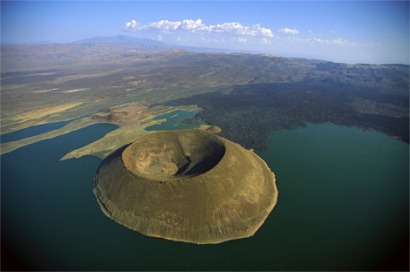
The wind farm site, covering 40,000 acres, is located in Loyangalani District, Marsabit West County, in north-eastern Kenya. The project will comprise 365 wind turbines (each with a capacity of 850 kW), the associated overhead electric grid collection system and a high-voltage substation.
The Kenya Electricity Transmission Company Ltd, with concessional funding from the Spanish government, is also constructing a double circuit 400-kv, 428-km transmission line to deliver the output from the LTWP along with power from other future wind farms to the national grid.
The wind farm is being developed by the LTWP consortium comprising KP&P Africa B.V., Aldwych International, Industrial Development Corporation of South Africa (IDC), Industrial Fund for Developing Countries (IFU), and the Norwegian Investment Fund for Developing Countries (Norfund). LTWP is solely responsible for the financing, construction and operation of the wind farm, while Aldwych, an experienced power company focused on Africa, will oversee the construction and operations of the power plant on behalf of LTWP.
Vestas will provide the maintenance of the wind farm, the output of which will be bought at a fixed price by Kenya Power (KPLC) over a 20-year period in accordance with a signed Power Purchase Agreement.
Reliable wind
The site of the wind farm is 450 metres from the shore of Lake Turkana and 2,300 metres above sea level at the top of Mt. Kulal. The area around the site is exposed to a unique geographical phenomenon, whereby daily temperature fluctuations generate strong predictable wind streams between Lake Turkana (with a relatively constant temperature) and the desert hinterland (with steep temperature fluctuations). The valley between the Mt. Kulal and Mt. Nyiru ranges (2,750 metres above sea level) effectively acts as a funnel causing wind streams to accelerate (known as the Turkana Corridor low level jet stream), meaning that the wind farm will enjoy a reliable wind resource wind stemming from the East African jet stream which stretches from the ocean through the Ethiopian highlands and valleys to the deserts in Sudan in a south-east direction all year round.
Indeed, data collected and analysed since 2007 indicate that the site has some of the best wind resources in Africa, with consistent wind speeds averaging 11 metres/second and from the same direction year round.
Consequently, it is expected that the project will be the “least cost power generation option available in the country along with geothermal power and at even less cost than the feed in tariff for other wind projects set at US$12 cents/kWh” explains the LTWP consortium, revealing that the LTWP tariff will be approximately 60% cheaper than that of a conventional thermal power plant.
Furthermore, it will reduce Kenya’s need to depend on unreliable hydro power and will insulates Kenya’s power tariff by providing a low and consistent power price.
LTWP has also registered with the UNFCCC and been awarded the Gold Standard rating. The carbon credits it will generate should earn €200 million over the life of the project, some of which will be ploughed back into the local community. According to LTWP, “a Corporate Social Responsibility (CSR) programme is being finalised based on extensive input from the communities in order to ensure that livelihoods are improved; LTWP will use a combination of revenue from carbon credits and profit to form and fund a trust, which will ensure a well-targeted plan over the 20 years of the investment”.
Marsabit West County is among the poorest counties in Kenya, while Loyangalani is one of the poorest districts in Marsabit. The wind farm will undoubtedly bring much needed wealth and jobs to the area. The LTWP’s tax contribution to Kenya will be approximately €22.7 million per year, while up to 2,500 jobs will be created during the 32-month construction period, followed by over 200 full-time jobs throughout the period of operations.
It is envisaged that 50 to 90 MW of the wind farm’s total capacity will be commissioned by December 2013, and that the facility will be fully operational by late 2014.
For additional information:


